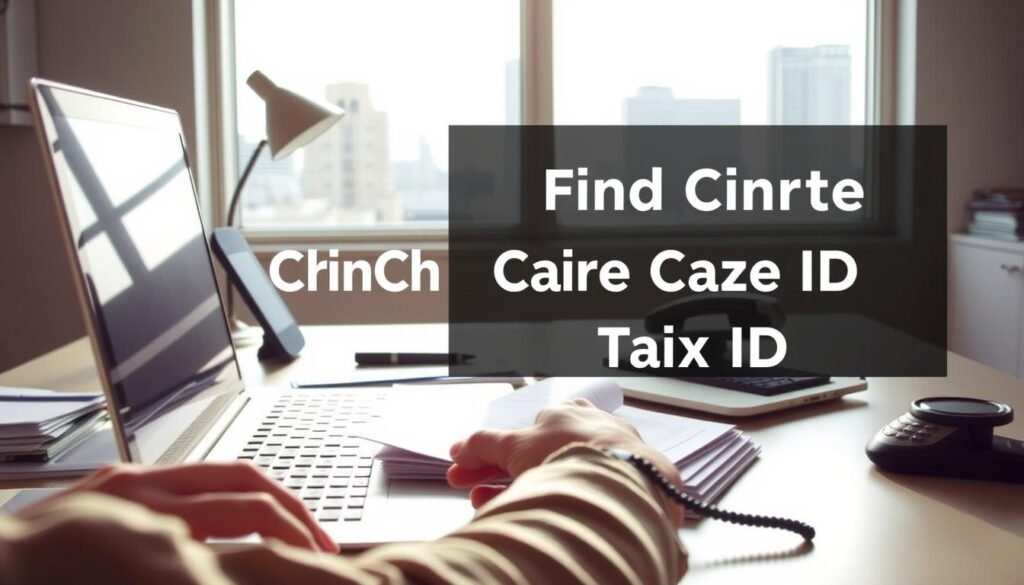
Last tax season, I spent hours digging through stacks of receipts and forms, only to realize my childcare provider’s tax ID was missing from half my records. Sound familiar? If you’ve ever felt that panic of incomplete paperwork while prepping your taxes, you’re not alone. That nine-digit identifier matters more than you might think.
Your daycare’s tax ID – officially called an Employer Identification Number – is like a social security number for their business. The IRS requires it to verify childcare expenses when claiming credits. Without it, you risk delays, audits, or even losing out on savings. Trust me, scrambling for it last-minute isn’t worth the stress.
Most providers include this number on payment receipts or enrollment contracts. But sometimes it’s buried in fine print or missing entirely. When that happens, knowing where to look (or who to ask) makes all the difference. Let’s walk through the simplest ways to track it down so you can file confidently this year.
Key Takeaways
- Your daycare’s tax ID is required for claiming childcare credits on IRS forms
- Check payment receipts, enrollment agreements, or annual statements first
- Many parents overlook this detail until tax deadlines approach
- Direct communication with your provider often resolves missing info quickly
- Proper documentation helps avoid IRS compliance issues
Understanding Your Daycare’s EIN Number
When I first started claiming childcare credits, I didn’t realize that nine-digit code on my receipts was more than just random numbers. This identifier – officially called an Employer Identification Number – acts like a social security number for businesses. Licensed providers use it to report income and verify their legitimacy.
What Is This Tax ID Really For?
The IRS assigns EINs to track business-related activities. For families, it’s proof your provider operates legally. Without it, the IRS can’t confirm if your payments qualify for credits like those on Form 2441. Last year, a friend almost lost $1,200 in deductions because her babysitter didn’t have one.
Why This Matters for Your Wallet
Valid EINs unlock tax savings and simplify audits. They let the IRS cross-check your care expenses against the provider’s reported income. I always keep copies of invoices with this number – it’s saved me hours during two separate tax reviews. Plus, licensed centers with clear EINs often provide year-end statements, making record-keeping effortless.
Pro tip: If your provider hesitates to share their EIN, ask politely. Most understand it’s essential for your family’s financial planning. Transparency here builds trust on both sides.
how to find ein number for daycare: Step-by-Step Guide

I’ve discovered three reliable methods to secure this essential tax detail without last-minute panic. Each approach builds on the next, creating a safety net for your financial records.
Start With Paper Trails
Payment records often hold the key. Last quarter, I spotted the needed identifier on a crumpled receipt from my son’s summer program. Check both physical and digital invoices – many licensed centers include it near business addresses.
Direct Outreach Works Best
When my preschool’s tax ID wasn’t visible, a quick call solved everything. Most providers keep this information handy for parent requests. Pro tip: Ask during off-peak hours when staff have time to verify details.
Tap Into State Resources
California’s licensing portal once helped me confirm a new babysitter’s credentials. These databases often list registered businesses with their official IDs. While browsing, I also discovered compliance history – bonus reassurance for careful parents.
One director told me: “Transparent providers want families to claim every dollar they’re owed.” If you hit roadblocks, the IRS offers guidance for missing documentation. Keep screenshots or copies of your search efforts – they’ve saved me during two audit reviews.
Additional Considerations for Child Care Providers
Choosing where to entrust your little ones involves more than just crayons and nap times. My neighbor learned this the hard way when her unlicensed babysitter vanished mid-month – along with her tax paperwork. Licensed operations offer protections that go beyond basic supervision.
Safety Nets Beyond the Playground
State-licensed centers undergo surprise inspections – I’ve watched evaluators check fire exits during pickup. These visits ensure staff ratios and sanitation standards meet legal requirements. Transparent compliance histories let parents review any past incidents online, something I always do before enrolling my kids.
One director shared: “Our licensing isn’t just paperwork – it’s our commitment to exceeding minimum care standards.” This accountability means they’re more likely to provide organized financial records, including those crucial tax IDs.
Paperwork That Pays Off
KinderCare and similar providers email annual summaries each January. These year-end statements outline total payments and include the center’s official identification number. Last year’s PDF arrived with a breakdown of care expenses by month – perfect for attaching to Form 2441.
Lost your copy? Most centers keep digital backups. A quick call to their billing department resolved my missing 2022 records in minutes. Keep these documents with tax receipts – I organize mine in labeled folders for instant access during filing season.
Peace of mind isn’t just about safe environments. It’s knowing your financial paper trail supports every credit you claim. Licensed providers deliver both.
Conclusion
Every tax season, parents scramble for missing details they could’ve secured months prior. Locating your child care provider’s tax ID isn’t just paperwork – it’s money protection. Those nine digits validate your eligibility for credits and shield you from audit headaches.
Start with payment receipts or enrollment contracts. Most providers tuck this info near billing details. If it’s missing, a quick call often solves the mystery. I’ve had directors email me the number while I waited on hold.
“Organized parents save hours during tax time,” my accountant reminds me each January. Licensed centers simplify this process with automated year-end statements – KinderCare’s digital summaries arrive like clockwork. Keep these PDFs with your tax records for instant access.
Double-check details using ChildCare.gov’s verification tools. I cross-reference every care provider’s credentials there. It takes two minutes and adds legal reassurance to your financial claims.
Stay ahead by requesting updates each enrollment period. My labeled folder for child care documents has saved me three tax cycles running. Peace of mind? Priceless.

Leave a Reply